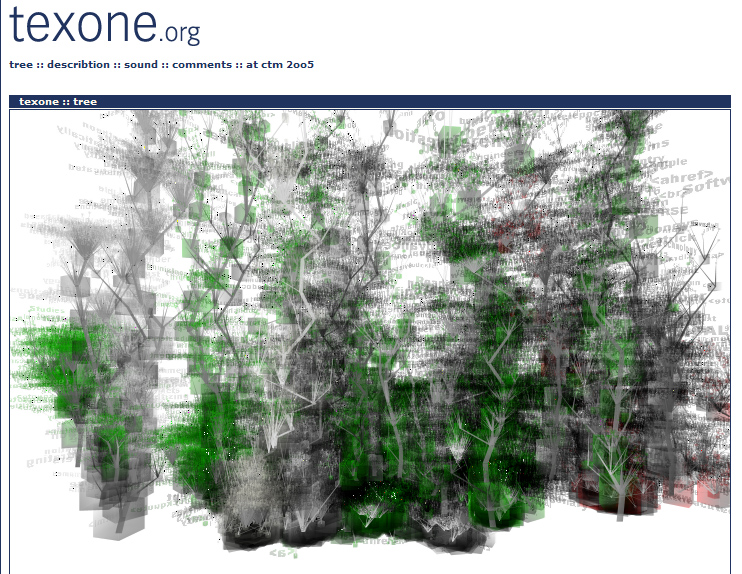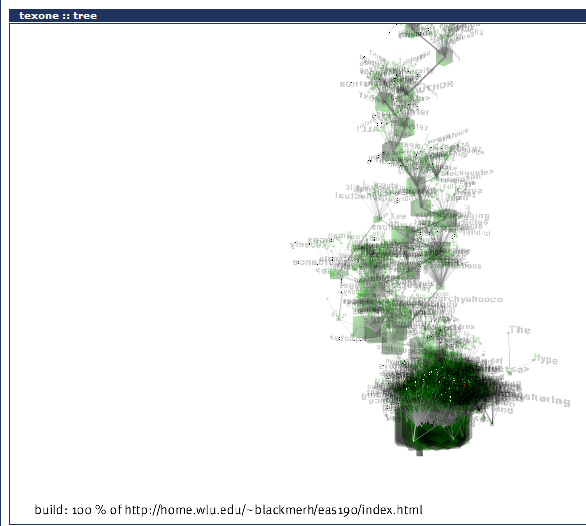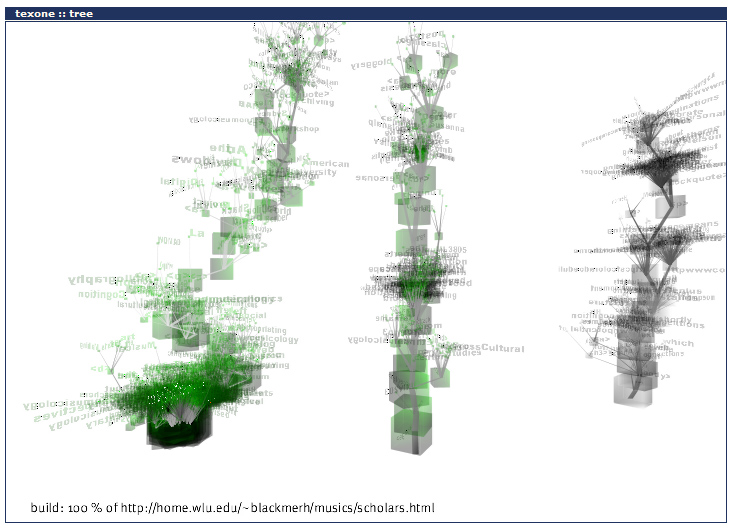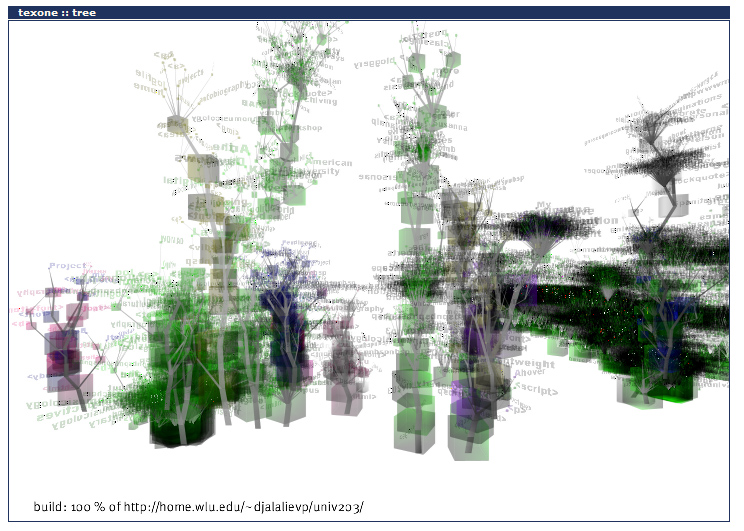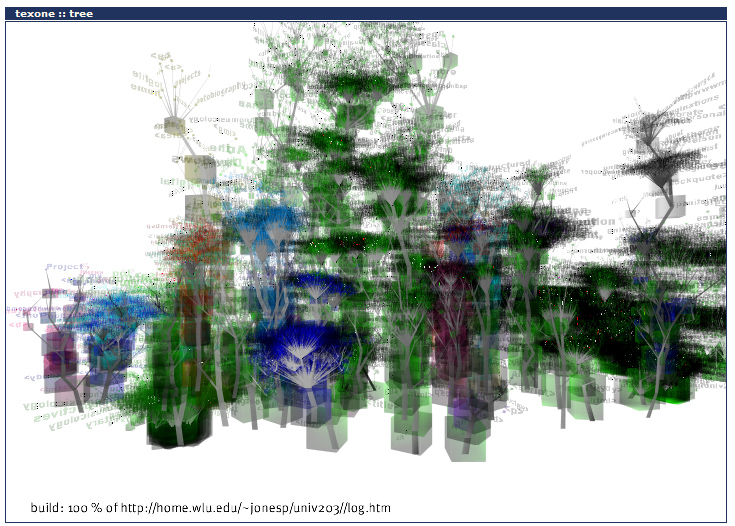For Kristen:Basically, what I have high interest in researching is advertising.
Considering it is what I would like to do as a career post-graduation,
I think it is very important to be cognizant of subtle but effective advertisements
which influence our social realities.
Hence, I would like to do some research on gender?stereotyping in advertising,
specifically regarding women.I want to point you in the direction of a bunch of disquieting ideas, things to think about as you stand on the end of the Diving Board of Commencement, headed toward the career sketched in that passage. I'm tempted to suggest that you begin with Naomi Klein's No Logo (HD69.B7 K58 2000) and travel outwards from there (see nologo.org, and Spike Magazine article). See also The Logo as Fetish:
Marxist Themes in Naomi Klein's No Logo (Matthew Sharpe --and much more interesting than it sounds from the subtitle!). And perhaps also consider
Bakan, Joel.
The corporation : the pathological pursuit of profit and power
New York : Free Press, c2004.
HD2731 .B23 2004. (I have the DVD on order --should be here later this week)
Another essential:
The Cluetrain Manifesto (full text here --see especially the Markets Are Conversations chapter ...and hear a minute of Doc Searls on the idea of "market as conversation" as a meme). See Clusty search for 'cluetrain' for some perspective(s) ...and it might be interesting to look at the Amazon SIPs for the book...
and here's a Piece of Evidence: Samsung Q30 notebook, now in red for the ladies --and see other stuff at Popgadget
Information wants to be free? Terry Calhoun, in Campus Technlogy
The origin of the phrase, "Information wants to be free," is with Stewart Brand, creator of The Whole Earth Catalog, CoEvolution Quarterly, and the pioneering online community The WELL. He coined it in 1984 at the first Hackers’ Conference, saying:
"On the one hand information wants to be expensive, because it's so valuable. The right information in the right place just changes your life. On the other hand, information wants to be free, because the cost of getting it out is getting lower and lower all the time. So you have these two fighting against each other." (Whole Earth Review, May 1985, p. 49.) (Note: At the time, "hackers" meant "programmers.")
John Perry Barlow analogized that since we have no good solution to the challenge of securing digital information and that we are rapidly digitizing everything possible, we are on a sinking ship which is leaking information out from within and taking on water from without.
"Legal efforts to keep the old boat floating are taking three forms: a frenzy of deck chair rearrangement, stern warnings to the passengers that if she goes down, they will face harsh criminal penalties, and serene, glassy-eyed denial." (Wired Magazine, March 1994, “The Economy of Ideas”)
Every time I read these kinds of statements from more than 10 years ago I internally shake my head at their brilliance and my – at the time at least – cluelessness. Sigh.
...I just don’t think it’s true that the average human (or even me) nowadays consumes (more precisely takes in, it’s still all out there, except for olfactory information, which is based on actual physical substances which get used up as we receive the information they carry) more information than humans hundreds of years ago, and here’s why.
First, there is no doubt that we have far more bits and pieces and kinds of information available to us that ever before. But it’s pretty likely that without physical and electronic augmentation of the human brain that we do not have yet, that human brains have not only a ‘carrying capacity’ in terms of storage, but a number of variable limitations on incoming information bandwidth.
Second, we’ve probably increased the throughput of certain kinds of incoming information, but at the same time our culture and technology have placed many of us in an environment which is quite different from the ones that our ancestors lived in. That old truism (which may not be true, although it serves the purpose here) about the Inuit having so many words for “snow” actually points to the fact that the more people pay attention to something in their environment, the more they find there is to it. Kind of like where we’ve gone with science in the past couple hundred years.
Third, we--or rather our culture-–train ourselves to not recognize or see certain kinds of information. Even to actively avoid it. Take the common practice in crowded elevators of everyone facing the front while they travel up or down. We’re looking at a stainless steel wall instead of at maybe 15 other human beings, with all their different faces, hairstyles, clothing, and accouterments. Many of us have even let television or movie stars replace, for purposes of gossip and caring, the kinds of relatives and neighbors who would have filled those roles for us even only 100 years ago. Since what all those stars do is pretty intensely scripted, it’s like living in a gossip monoculture equivalent to 1,000 square miles of the same specific subspecies of wheat.
DJ Spooky Raps About Remixing (Wired News)
Another facet of Wikipedia: Talk: The Long Tail ...from my perspective, the important thing here is that the Process is transparent. We see the Web (in this instance, the Wiki) as a Read-Write Medium. Alas that so few in the ed. biz. seem to have caught on...
www.grokker.com --a Yahoo-driven visualizer of Web searches ...but hors de combat at the moment
Consider the implications: RSS Feeds Available from PubMed®
For Letisha:
Perhaps I could do something involving Japanese movies and their remakes
I really like the movies-and-remakes idea. For me the ones that come to mind are jidai-geki classics:
Google 'fistful of dollars' and Yojimbo
and of course Seven Samurai/Magnificent Seven. Problem here and now is that you'll have difficulty finding the non-Japanese films (though there's a chapter on Magnificent Seven in PN1995.9.L37 M43 1993, and we DO have Fistful of Dollars: VIDEO PN1995.9.W4 F5 1991 !! --and there's a chapter in Leone's biography: PN1998.3.L455 F738 2000 ...and see others, including an anime remake, available via Netflix. See Clusty search)
The challenge is to say something new, and to get beyond the obvious Web stuff and into other literatures on film --books, criticism in film journals, etc. We do have some cinema journal resources that you should explore, notably Cinema Journal
and these film mags. The books on Japanese film need to be explored --don't know how much you'll find there.
for example:
Japanese Swordfighters and American Gunfighters
J. L. Anderson
Cinema Journal, Vol. 12, No. 2. (Spring, 1973), pp. 1-21.
And ?? The Midnight Eye Guide to New Japanese Film --see amazon.com record --on order for Leyburn
SIP chains
For Allen:
I want to do my guide on the Enron scandal
A case of there's-so-much... how do we find what's really interesting and important? Lots of things to try, among them
10 May
Clint:i wanted to do my topic on opening a business in india. I understand that India is not considered "East Asian" typically but there is no asia major, so I had to deal with what was offered. I wanted to do my thesis on opening a entertainment center in Mumbai that would dip into pop culture as well as managing a full scale working establishment.
Now here's an interesting challenge, taken as an Information problem. Question is, where to begin?
- one possibility is to start with the question ?what would an "entertainment center" contain? Are we talking computer games, and other digital affordances?
- are there such things already, so that there's a model to work with?
- is there any literature that addresses the practicalities of (a) establishing and (b) running a business in India? What do you have to know about how things work in India/Mumbai?
- ...and is there any possibility that Clint could actually DO this as a thesis?
I'll start with my InfoProsthesis: "entertainment centre" mumbai google search (NOTE 'centre' !!) --860+ hits, from which we surely learn that malls are one of the locales, hotels another. I think of 'franchise' as a search term... So ?what and where? are the "entertainment centres" now existing and under development in Mumbai? How would one decide where to locate a new one?I see that a lot of development is taking place in new towns near Mumbai, like Navi Mumbai (and my friend Zini said as much when she stopped by a month or so ago).
New retail frontier unveiled for brands targeting young adults
What makes the retail space unique is the fact that the space being offered is part of what will be Mumbai’s first, truly integrated ‘young-adult entertainment centre,’ Fun Republic. Young adults as a segment do not currently have any integrated entertainment venues dedicatedly targeted towards their lifestyle and Fun Republic, Andheri, is set to fill this much-felt vacuum when it opens in the next 12-16 weeks.
Basic questions about practicalities...
starting a business in mumbai google search: "local partners" are surely a necessity. How do you find them? What do you bring to the partnership? Capital? Skills? hmmmm... Very basic question: what do you have to offer that isn't already well-established? What niches might you fit into --or would you have to create one? What resources do you have for niche-making?
And more generally: starting a business in india google search gets a lot... Starting a Business Details — India from worldbank.org looks like a good basic starting point
case studies of Mumbai startups?
Some basic India info: Times of India is published in Mumbai, and has Economic Times as one of its sections
Looking for something recent and relevant in Annie, found this:
Working across cultures / John Hooker.
Stanford, Calif. : Stanford Business Books, 2003.
HM1211 .H66 2003.
It's interesting to consider the situation of an Indian who seeks to set up a business in the US: what resources can/do they call upon? NB that they are very often Indian community resources --family, extended family, etc. The most obvious case I can think of is the Patels in the motel business (patels motel business google search, for starters...).
Looking over all of the above, 3 May to present, it occurs to me that many of the items I've mentioned are **occurrences since you were born** more or less. Thus, William Gibson's Neuromancer (1984) with its instantiation of "cyberspace" and description of the "consensual hallucination known as the matrix" ...that fundamentally defines the world in which you've grown up. Microcomputers have been on desktops ALL of your lives, and The Web (with its tools of browsers and email and sound/video multimedia) has been with you, as basic reality, for the 10+ years that you've been sentient beings. But most of your uses have been 'passive' in that you've seemingly had (or is it taken? or been presented with?) few opportunities to be contributors, and not much occasion to consider and discuss what it all means to have such tools at fingertips. Google hasn't 'always' been there --indeed, Yahoo and Google weren't there at all 10 years ago (see Google history, and SJMN story on Yahoo's history, and Yahoo's 'Computers and Internet History'), and certainly weren't at the absolute center of people's InfoVerses, as they arguably are now, for most of us. Likewise, Amazon has been afloat for just that 10 years (see Robert Spector's Amazon.com: Get Big Fast [Z473.A485 S64 2002]).
An amazing, indeed unprecedented, decade.
Amazon finds 281 occurrences of "consensual hallucination"
Course pages
Kristin
Allen
Hsiang-san
Clint
Letisha
16 May
Samuel Johnson:
It is the duty of every man to endeavour that something may be added by his industry to the hereditary aggregate of knowledge and happiness. To add much can indeed be the lot of few, but to add something, however little, every one may hope. Rambler #129 (June 11, 1751)
ccmixter.org "a community music sharing site featuring songs licensed under Creative Commons, where you can listen to, sample, mash-up, or interact with music in whatever way you want."
buzztracker.org ("Using Google, the site gives a visual representation of news on the net." --Larry Lessig)
Bruce Mau's Incomplete Manifesto for Growth
?? What's the most important question?
On Women and Employment in Japan:
Google search "women's employment" japan
The Changing Sexual Division of Labor in Postwar Japan
TANAKA Sigeto (tsigeto@nik.sal.tohoku.ac.jp)
Kazoku Syakaigaku Kenkyu (Japanese Journal of Family Sociology, ISSN 0916-328X), 8: p.151-161, 208 (July 1996).
Changing Japanese Employment Patterns and Women's Participation:
Anticipating the Implications of Employment Trends
by Colleen M. Fox
'Equal Employment Opportunity Law System' and Women
Bill Gordon
The Situation of Women in Japan
Japan Institute of Workers' Evolution
(see also History of the JIWE)
Glenda S. Roberts' review of
Women's Working Lives in East Asia. Edited by Mary C. Brinton. Stanford University Press, Stanford, 2001
Gender Equality in the Workplace, at Home and in the Community
(Type of M-shaped curves differ by prefectures)
Problems of the Equal Employment Opportunity Law
By SAKAI, Kazuko
Female Labor Force After the Enforcement of The Equal Employment Opportunity Law
Sachiko Imada
Women's Employment in Japan: The Experience of Part-time Workers Kaye Broadbent
see Amazon record
The low status accorded to part-time workers in Japan has resulted in huge inequalities in the workplace. This book, based on extensive original research, including case study investigations in Japanese workplaces, examines the problem in depth, and hows the extent of inequality. It shows how many part-time workers, most of whom are women, are concentrated in low paid, low skill, poorly unionised service sector jobs. Part-time workers in Japan work hours equivalent to, or greater than, full-time workers but receive lower financial and welfare benefits than their full-time colleagues. Overall, the book demonstrates that the way part-time work is constructed in Japan re-inforces and institutionalises the sexual division of labour.
Japanese Women Working
by Janet Hunter
====
A way of indexing del.icio.us:
populicio.us new links by popularity in the last 24, 48 hours
Network effect from Wikipedia
Tag Soup from Yahoo
17 May
Gigablast indexes 2+ billion pages
Remix Your Web (O'Reilly Emerging Technology Conference, mid-March 2005)
Udell Keene screencast
Amazon.com, Ebooks and "Chump Change" (rjnagle on kuro5in)
...aftermarket reselling of books is decreasing the time window in which publishers and content creators can make money. A book retailing initially at $20 can sell used for 25 cents or less within a year or less (to the detriment of the author's royalties.) The biggest beneficiary of the "aftermarket" is none other than Amazon.com, with its ever-increasing transaction fees...Curiously, in an age of widespread literacy and access to all kinds of books, people are reading fewer books and when they do, it is the same old crap everybody else is reading . People have offered explanations: competing entertainment choices, the decline of independent bookstores, the abundance of books tied in with other media properties... Litblogging has gone a long way to counteract this narrowing of tastes by exposing people to a wider variety of writers (the same has been happening in the world of MP3 Bloggers) . But mainstream success is still defined by the public as coverage in Big Media, which is increasingly focused on its own media properties.
...ontent creators need a way to sell and distribute content with less restrictive licenses (i.e., Creative Commons or Founder's Copyright). People are using more liberal licenses not just to be "nice" but to make it easier to publicize and promote their works. Audience building lies at the heart of the problem. As publisher Tim O'Reilly once wrote, "Obscurity is a far greater threat to authors and creative artists than piracy."
By acquiring a Print-on-Demand (POD) company and an ebook software company, Amazon.com is retooling itself to offer a complete publishing solution to authors disenchanted with the current state of publishing. We may soon live in a world where authors can upload content into Amazon's content management system, which then can sell it on demand as a physical object or digital ebook.
...This past year marked two watershed moments in the ebook world: a grayscale ebook reader (Ebookwise 1150) began selling near the $100 range, and a high-end reader (Cybook ) capable of reading most ebook formats began selling near the $400 range. Both devices allow importing of .txt, .rtf and .html files.
Cory Doctorow's anti-DRM talk ("originally given to Microsoft's Research Group and other interested parties from within the company at their Redmond offices on June 17, 2004")
Self Publishing Changes All the Rules?
Tim O'Reilly, April 24, 2005
google-watch.org, for a different perspective...
Lawrence Lessig, from Web 2.0:
Remix 1 3 minutes: "...an extraordinarily important freedom that our culture guarantees... a freedom to remix..."
remix 2 2 minutes: "the potential of this technology is new, and the restrictions are new..."
remix 3 another 2 minutes: "the world of freedom that text people enjoy was not written for the world that multimedia is..."
Remixed for today's class
18 May
Playlists, wireless discovery, and social discovery
Rolling up RSS
Some of the best brief characterizations of API, from http://37signals.com/svn/archives2/an_exercise_in_clarity_api.php
a protocol droid for computer programs - Megl
One half of a piece of computer velcro ;) - Warren
A set of sockets for other programs to plug in to. - Josh Wand
Superglue your cat to your dog. Meowoof. Except useful. - Jim Lindley
Makes your app a server, and other apps its clients.
“An API lets my code get at your data.”
19 May
I mentioned my own experience with Google Accelerator in class on Tuesday, but this posting puts it into a useful context in pointing to attention as the fungible. Steve Gillmor sez:
The main problem with spyware is unauthorized access to attention metadata. But like Rojo, and less efficient attention farms such as Bloglines, you know upfront that you’re delivering metadata to a proprietary cloud. With Web Accelerator, apparently you’re teaching Google to intelligently cache your pages based on look-ahead link farming. That by itself will produce some broadband acceleration, some Javascript autodelete errors, and a wealth of attention metadata about who, what, and when you read. So far so good–for Google.
Unlike spyware, you have agreed to provide this metadata in return for a service–acceleration, lack of latency, perceived real-time responsiveness. Google gets a larger footprint that expands upon search to the fruits of search. The more intelligently it mines this metadata, the more usefully it can predict what information you are looking for, not just the knowable links but the discoverable ones. This is the doorway to broad opportunities–the Google Office desktop suite, and the offline synchronization model that will push this to the enterprise.
With GMail extended to calendaring and RSS, a persistent and discoverable store for events and their corollary byproducts–tickets, babysitters, rentals, hotels, t-shirts, vertical iPods–is enabled. Predicting desirable events based on disruptively synchronous sales events (a low-fare rountrip to London and a Cream reunion RSS item with high bubble-up priority) will offer attention-derived value to users in return for their comprehensive metadata. Surely this is the monetization path for Accelerator.
The good news for us attention junkies is that the only way forward into that virtuous circle of metadata is API access. Just because attention may start or prosper in a proprietary space doesn’t mean it will remain locked there. One look at craigslist tell us that an open marketplace of attention metadata will emerge as the glue between these private gardens–a kind of forever wild preserve owned by the users. In this context, Bloglines is good, Rojo is better, Web Accelerator potentially even better, and all of them plus an attention garden the best.
It’s this aggregation of trust, affinity, and interest that we call our family in this virtual age. Attention is not automation; it’s the aggregation of gestures that model our instincts, hopes, and ethics. Cars extend our reach, but then we get out and walk up the steps to our destination. With attention and its fruit, we can turn search on its head, empowering ideas to find the people they need to spread their wings. Don’t worry–we’ll know it when we see it.
(http://blogs.zdnet.com/Gillmor/?p=93)
Consider disintermediation, via Alex Steffen and Bruce Sterling at SXSW:
disintermediate fabrication and fabjects


Wikipedia on Disintermediation
World Wide Words on Disintermediation
The Myth Of Disintermediation (Michael Hammer, Information Week July 10, 2000)
The Internet has spawned many myths, perhaps the greatest of which is disintermediation. This term first became part of the lexicon during the revolution in financial services precipitated by the high interest rates of the 1970s. At that time, consumers discovered they could get better returns on their money by disintermediating--i.e., cutting out banks and directly investing in the same money markets as the banks.
Today, disintermediation is supposedly dooming distributors, retailers, wholesalers, and all other intermediaries between manufacturers (or service providers) and the ultimate customer. Because the Internet lets customers connect to and order from the primary source of a product, there's presumably no need for traditional distribution channels and their costs and delays. The great role model for all of this is Amazon.com, whose success in the book business has caused much consternation and gnashing of teeth in many other industries. This is the conventional wisdom, and, as usual, the conventional wisdom is wrong.
A more reasoned view of the impact of the Internet on distribution channels is that it will transform but not eliminate them. The reality is that customers need a significant amount of value to be added to most products before they can buy and use them...
20 May
danah boyd on what buzztracker really shows (emphasis added!):
a visualization of the locations of Google News stories, letting you quickly see how litle of the world is actually covered by the news. This visualization complements Ethan Zuckerman's arguments about news coverage. What we need now are two maps - what the news covers and what the blogosphere covers. As much as Ethan's stats are useful, there's nothing like a map to let you viscerally get it.
(http://www.zephoria.org/thoughts/archives/2005/05/19/visualizing_news_bias.html)
23 May
Taxonomies and Tags:
From Trees to Piles of Leaves (Dave Weinberger)
Consider this as a way of publishing:
Darknet Mini-book chapters
Concept: darknets
...the vast, gathering, lawless economy of shared music, movies, television shows, games, software, and porn—a one-touch jukebox that would rival the products and services of the entertainment companies...For the most part, the Darknet is simply the underground Internet. But there are many darknets: the millions of users trading files in the shady regions of Usenet and Internet Relay Chat, students who send songs and TV shows to each other using instant messaging services from AOL, Yahoo, and Microsoft, city streets and college campuses where people copy, burn, and share physical media like CDs, and the new breed of encrypted dark networks like Freenet...
The Darknet is less a place or a thing than an idea. On a mundane level, the Darknet is about getting free stuff. On a deeper level, it’s about millions of people engaging in a shared media experience and finding a clandestine way to detour around restrictions imposed by the entertainment industries...
Certainly, much Darknet conduct is illegal. Clearly, many underground activities are ethically dubious or flat-out wrong. But much of it is also understandable as people look for ways to restore balance to a system that has become stacked against digital culture...
Story: The tech and CE industries get cozy with HollywoodDarknet index, the whole thing...
Is the Long Tail full of crap?
First, let's get one thing straight: the Long Tail is indeed full of crap. But it's also full of works of refined brilliance and depth--and an awful lot in between. Exactly the same can be said of the Web itself. Ten years ago, people complained that there was a lot of junk on the Internet and, sure enough, any casual surf quickly confirmed that. Then along came search engines to help pull some signal from the noise and finally Google, tapping the wisdom of the crowd itself to turn a mass of incoherence into the closest thing to an oracle the world has ever seen.
On a store shelf or in any other limited means of distribution, the ratio of good to bad matters because it's a zero sum game. Space for one eliminates space for the other. Prominence for one obscures the other. If there are ten crappy toys for each good one in the aisle, you'll think poorly of the toy store and be discouraged from browsing. Likewise it's no fun to flip through bin after bin of CDs if you haven't heard of any of them.
But where you have unlimited shelf space, it's an infinite sum game. The billions of crappy web pages about whatever are not a problem in the way that billions of crappy CDs on the Tower Records shelves would be. Inventory is "non-rivalrous" and the ratio of good to bad is simply a signal-to-noise problem, solvable with information tools.
Which is to say it's not much of a problem at all. You just need better filters, such as good search engines. The fact that screens 10 and beyond of your Google search results are unhelpful doesn't matters because screens 1-3 are so useful. The noise is still out there, but Google allows you to effectively ignore it. Filters rule!
The following is this expressed graphically. As you go down the Long Tail the signal-to-noise ratio gets worse. Thus the only way you can maintain a consistently good enough signal to find what you want is if your filters get increasingly powerful.
Jon Udell's walking tour of Keene ...and see Bloogz citations
Two books to explore further:
McLeod, Kembrew, 1970-
Freedom of expression : overzealous copyright bozos and other enemies of creativity
New York : Doubleday, 2005.
KF2979 .M348 2005.
Lessig, Lawrence.
Free culture : how big media uses technology and the law to lock
down culture and control creativity
New York : Penguin Press, 2004.
CALL NO. KF2979 .L47 2004.
(says Siva Vaidhyanathan: "the best book ever written about intellectual property" [American Scholar 2005 Spring, pg 132])
The Last Class
